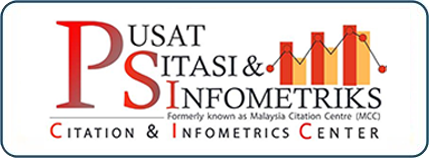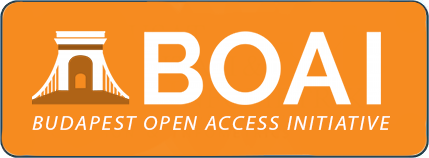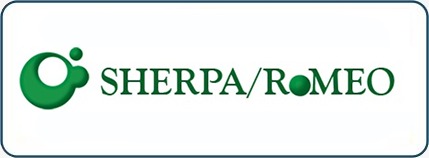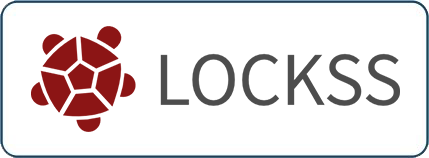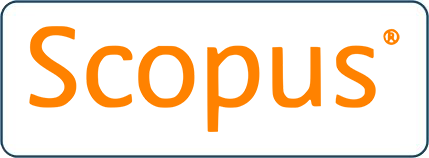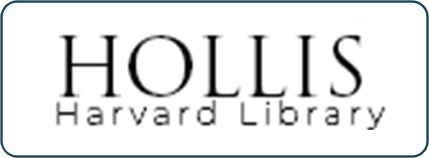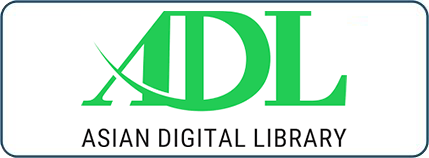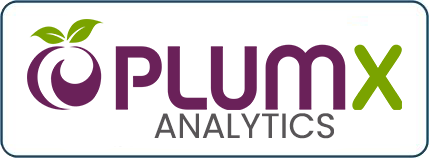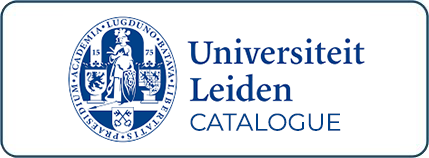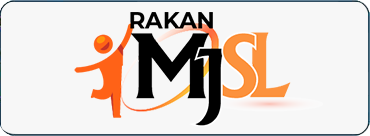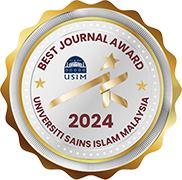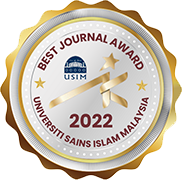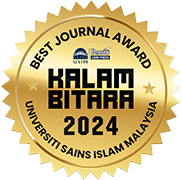EXPLORATION OF BEHAVIOURAL MOTIVES IN CONSUMPTION OF 0% ALCOHOL DRINKS BY MUSLIM YOUTHS IN INDONESIA
DOI:
https://doi.org/10.33102/mjsl.vol12no2.676Keywords:
Alcohol 0% drink, alcohol popular brand, halal label, Muslim youth, phenomenology, IndonesiaAbstract
This study aims to discover the motives behind several Muslim youths in Indonesia who consume 0% alcohol drinks from popular alcohol brands even though the drink is not halal certified. This phenomenological research describes a factual reality based on the informant's experience as a consumer of 0% alcohol drink. Data sources were obtained through direct and indirect interviews with 15 informants, namely Muslim youth who consume 0% alcohol with an age range of 15-25 years. The results of this study indicate that there are internal and external motives behind Muslim youths consuming 0% alcohol. Internal motives from within Muslim adolescents include curiosity and the desire to try as an alternative to drinking, as well as to relieve stress and to refresh themselves. Meanwhile, external motives or influences from outside the Muslim youth include invitations from peers and environmental influences. This research also identified that some perpetrators who drink 0% of alcoholic drinks made by popular alcohol brands have low awareness of the halal label. This study contributes to global research by revealing how Muslim youth in Indonesia, driven by curiosity and peer influence, consume 0% alcohol drinks despite the lack of halal certification. This study suggests increasing halal awareness among Muslim adolescents through education and encouraging the Indonesian Ulema Council to emphasize the importance of halal certification, particularly for 0% alcohol drinks, to guide informed consumer choices.
Downloads
References
Abdussamad, Z. (2021). Qualitative research methods. In P. Rapanna (Ed.), Syakir Media Press (Vol. 4, Issue 1). Syakir Media Press. https://repository.ung.ac.id/get/karyailmiah/8793/Buku-Metode-Penelitian-Kualitatif.pdf
Afrilia, A. M. (2017). The use of new media among young mothers as a current parenting media. Jurnal Komunikasi dan Kajian Media, 1(1), 31–42. https://doi.org/10.31002/jkkm.v1i1.389
Agiyah, M. (2022). Factors that influence adolescents consuming alcohol. Nusantara Hasana Journal, 2(7), 47–50.
Alfan, M., & Rumi, J. (2020). Counseling on juvenile delinquency actions from a legal and health perspective to middle school students in Kalisat Village, Kalisat District, Jember Regency. JIWAKERTA: Jurnal Ilmiah Wawasan Kuliah Kerja Nyata, 1(2), 44–47. https://doi.org/10.32528/jiwakerta.v1i2.5014
Anugraheni, D. S. (2018). The relationship between peer associations and alcoholic drinking behavior in adolescent boys in Padan Keji Mutilan Hamlet, Magelang, Central Java [Universitas 'Aisyiyah]. http://digilib.unisayogya.ac.id/4336/
Apriani, T., & Nuryakin, R. A. (2022). Food and beverage products that cannot be certified halal by the Indonesian Ulema Council: Maslahah perspective in Islamic business ethics. Jurnal Aghinya, 5(1), 27–38.
Ariyanto, A., & Sulistyorini, S. (2020). Basic motivational concepts and applications in Islamic educational institutions. AL-ASASIYYA: Journal of Basic Education, 4(2), 103–114. https://doi.org/10.24269/ajbe.v4i2.2333
Azizah, N. (2022). The regulation of halal label in non-packaged fast-food products in Indonesia online business. Malaysian Journal of Syariah and Law, 10(1), 132–139. https://doi.org/10.33102/mjsl.vol10no1.364
Creswell, J. W. (2009). Research design: Qualitative, quantitative, and mixed methods approaches (M. Markanich, Ed.; 4th ed., Vol. 21, Issue 1). SAGE Publications.
Dao, T. Z., & Hulu, F. (2022). Teenage behavior in consuming liquor in Hilindrasoraya Village, Toma District, South Nias Regency in 2021. Civic Society Research and Education, 3(1), 1–11.
Febriandika, N. R., Wijaya, V., & Hakim, L. (2023). Gen-Z Muslims’ purchase intention of halal food: Evidence from Indonesia. Innovative Marketing, 19(1), 13–25. https://doi.org/10.21511/im.19(1).2023.02
Gewab, B. T. P. A., Risanti, E. D., Herawati, E., & Mahmudah, N. (2020). The relationship between online game addiction and smoking and stress in adolescents. Biomedika, 12(2), 117–123. https://doi.org/10.23917/biomedika.v12i2.10737
Goldman, E. F., & Swayze, S. (2012). In-depth interviewing with healthcare corporate elites: Strategies for entry and engagement. International Journal of Qualitative Methods, 11(3), 230–243. https://doi.org/10.1177/160940691201100304
Granot, E., Brashear, T. G., Cesar, P., Brashear, T. G., & Motta, P. C. (2012). A structural guide to in-depth interviewing in business and industrial marketing research. Journal of Business & Industrial Marketing, 27(7), 547–553. https://doi.org/10.1108/08858621211257310
Hakim, M., & Fanani, M. R. (2019). Employee performance analysis case study: Pt. Reycom Solution Document. Jurnal Dinamika Ekonomi & Bisnis, 16(1), 2–16. https://doi.org/10.34001/jdeb.v16i1.953
Hendradewi, S., Mustika, A., Darsiah, A., Tinggi, S., & Trisakti, P. (2021). The influence of halal awareness and halal labels on interest in buying Korean instant noodles among school adolescents in Jakarta. Jurnal Ilmiah Pariwisata, 26(2), 204–212. https://doi.org/10.30647/jip.v26i2.1510
Irawan, A. W., & Aswar. (2020). The meaning of being a counseling guidance teacher (phenomenological study of fresh graduates). JKI (Jurnal Konseling Indonesia), 5(2), 47–53. https://doi.org/10.21067/jki.v5i2.4368
Lenaini, I. (2021). Purposive sampling techniques and snowball sampling. Historis: Jurnal Kajian, Penelitian dan Pengembangan Pendidikan Sejarah, 6(1), 33–39. https://doi.org/10.31764/historis.v6i1.4075
Lestari, T. R. P. (2016). Questioning the regulation of alcoholic drink consumption in Indonesia. Aspirasi: Jurnal Masalah-Masalah Sosial, 7(2), 127–141. https://doi.org/10.46807/aspirasi.v7i2.1285
Lesthari, F., & Permana, M. Z. (2022). Experience of building goals and life purposes in emerging adulthood: Phenomenological analysis. Jurnal Psikologi Perseptual, 7(2), 168–181. https://doi.org/10.24176/perseptual.v7i2.6711
Maharani, M., & Ampuni, S. (2020). Anti-social behavior of male adolescents in terms of moral identity and moral disengagement. Indigenous: Jurnal Ilmiah Psikologi, 5(1), 54–66. https://doi.org/10.23917/indigenous.v5i1.8706
Makbul, M. (2021). Data collection methods and research instruments [UIN Alauddin Makassar]. In OSF Preprints. https://osf.io/svu73/download
Mashuri, M. (2019). Demand analysis using the maslahah approach. BALANCA: Jurnal Ekonomi Dan Bisnis Islam, 1(1), 92–109. https://doi.org/10.35905/balanca.v1i1.1041
Miles, M. B., & Huberman, A. M. (1984). Drawing valid meaning from qualitative data: Toward a shared craft. Educational Researcher, 13(5), 20–30. https://doi.org/10.3102/0013189X013005020
Muttaqin, M. I. (2022). Social conditions of adolescents consuming alcohol (miras) (case study of adolescents in Dukuh Durenan, Durenan Village, Sidorejo District, Magetan Regency) [Institut Agama Negri (IAIN) Ponorogo]. http://etheses.iainponorogo.ac.id/id/eprint/18671
Muzakki, F. R. (2020). The concept of halal food and thayyib on health in the Qur’an (Analysis of thematic interpretation studies). Repository Institut PTIQ Jakarta. https://repository.ptiq.ac.id/id/eprint/370
Naftali, R., Madjakusumah, G., & Srisusilawati, P. (2022). Analysis of Muslim consumer behavior in using non-alcoholic soju products. Bandung Conference Series: Sharia Economic Law (BCSSEL), 2(2), 258–263. https://doi.org/10.29313/bcssel.v2i2.4290
Nagib, M., & Azmi, M. U. (2021). Relationship between knowledge level and adolescent environment with health due to alcohol consumption behavior in Lendang Tampel Village. ProHealth Journal, 18(2), 80–89. https://doi.org/10.59802/phj.202118291
Nasution, I. K. (2007). Smoking behavior in adolescents [Universitas Sumatera Utara Medan]. In Skripsi. http://repository.usu.ac.id/handle/123456789/3642
Nugraha, R., & Kurnianingsih, H. (2021). The effect of product quality, perceived price, and brand image on purchase decisions for Bintang beer in Soloraya. Jurnal Manajemen, 11(1), 76–86. https://doi.org/10.26460/jm.v11i1.2385
Othman, A. Q., Bakar, M., Yaacob, N. A., & Samsuddin, N. A. (2022). Penilaian maslahah dan mafsadah
dalam polemik program vaksinasi kanak-kanak di Malaysia: Assessment of the maslahah and mafsadah in the history of the polemic child vaccination program in Malaysia. AL-MAQASID: The International Journal of Maqasid Studies and Advanced Islamic Research,3(2), 1-15. 373. https://doi.org/10.55265/almaqasid.v3i2.35
Pertiwi, Y. D. (2018). Non-alcoholic beer products without a halal label in the perspective of the Lampung Province MUI [Universitas Islam Negeri Raden Intan Lampung]. http://repository.radenintan.ac.id/4682/1/skripsi%20yulia%20dinda%20pertiwi.pdf
Riadi, A. (2020). Halal product claims from the perspective of Islamic law (Coffee shop study on coffee beverages containing non-alcoholic rum elements) [Universitas Islam Indonesia]. https://dspace.uii.ac.id/bitstream/handle/123456789/30754/16421081%20Arif%20Riadi.pdf?sequence=1&isAllowed=y
Rori, P. L. P. (2015). The effect of alcohol use on adolescent life in Kali Village, Pineleng District, Minahasa Regency. Holistik, 16(16), 1–12.
Rosyadi, I. (2013). Ash-Satibi’s thoughts about maslahah murlah. Profetika, 14(1), 79–89. https://doi.org/10.23917/profetika.v14i1.2009
Rumnah, Hamidah, & Marsiah. (2022). Food and drinks that are good and halal according to Islam. Cendekia: Jurnal Ilmu Pengetahuan, 2(3), 223–231. https://doi.org/10.51878/cendekia.v2i3.1452
Sam, F. S. (2019). Factors behind teenagers consuming alcoholic drinks (Case study in Muso Salim, Karang Mumus Village, Samarinda City District). EJournal Sosiatri-Sosiologi, 7(4), 250–253.
Samsu. (2017). Research methods (theory and application of qualitative, quantitative, mixed methods, and research & development). Pusaka Jambi.
Senoadjie, M. F. (2022). Problems with food and beverage products containing alcohol/ethanol [Universitas Islam Negeri Syarif Hidayatullah]. https://repository.uinjkt.ac.id/dspace/bitstream/123456789/63284/1/M%20FIKRI%20SENOADJI%20-%20FSH.pdf
Setiawan, H. (2020). Karakteristik makanan halalan thayyiban dalam Al-Qur’an. Archipelago Journal of Southeast Asia Islamic Studies (AJSAIS), 3(2), 40–54.
Siregar, R., & Alam, A. (2018). Halal label on food products by MUI (Indonesian Ulama Council) and students purchasing decision of Faculty of Business and Economic Universitas Muhammadiyah Surakarta. Journal of Islamic Economic Laws, 1(1), 1–30. https://doi.org/10.23917/jisel.v1i1.6163
Sukiman, I., Syarifuddin, & Willem, I. (2019). Analysis of the factors of liquor consumption (pahit tuak) in adolescents in Buntu Tabang Village, Gandasil District, Tana Toraja Regency. Jurnal Ilmiah Manusia dan Kesehatan, 2(3), 343–353. https://doi.org/10.31850/makes.v2i3.177
Susilowati, I., Riyanto, E., Kirana, M., Mafruhah, I., & Radam, A. (2018). The economic and sharia value of Muslims’ awareness for halal food in Indonesia. Jurnal Ekonomi Pembangunan: Kajian Masalah Ekonomi dan Pembangunan, 19(1), 102–113. https://doi.org/10.23917/jep.v19i1.5859
Syarief, A. O., Pratiwi, M., & Urva, G. (2022). Education on the impact of alcoholic drinking on teenagers. Literasi Jurnal Pengabdian Masyarakat dan Inovasi, 7(1), 37–72. https://doi.org/10.58466/literasi.v2i1.1208
Tarigan, A. H. Z., & Nugroho, I. P. (2019). How adolescents’ curiosity is judging from the desire to actualize themselves within the school scope. Jurnal Bimbingan dan Konseling Ar-Rahman, 5(1), 24–28. https://doi.org/10.31602/jbkr.v5i1.1697
Widya, T., & Asri, T. (2019). Abuse of alcoholic beverages in adolescents. OSF Preprint, 1(1), 1–6. https://doi.org/10.31219/osf.io/meuk7
Zakaria, Z., Ramli, S. Q., Shoid, N. S. Z. M., & Sulaiman, A. (2022). Mapping halal cosmetics research: A bibliometric analysis. Malaysian Journal of Syariah and Law, 10(1), 63–75. https://doi.org/10.33102/mjsl.vol10no1.384
Zaluchu, S. E. (2020). Qualitative and quantitative research strategies in religion research. Evangelikal: Jurnal Teologi Injili Dan Pembinaan Warga Jemaat, 4(1), 28-38. https://doi.org/10.46445/ejti.v4i1.167
Zulkifli, & Sahid, M. (2018). Halal certification: Procedure and implementation in Indonesia. Malaysian Journal of Syariah and Law, 8(2), 49–59. https://doi.org/10.33102/mjsl.v8i2.125
Downloads
Published
Issue
Section
Categories
License
Copyright (c) 2024 Azhar Alam, Ririn Tri Ratnasari, Imron Mawardi, Sabilla Friska Amanda, Rashifahunnisa' Mellinia

This work is licensed under a Creative Commons Attribution-NonCommercial 4.0 International License.








